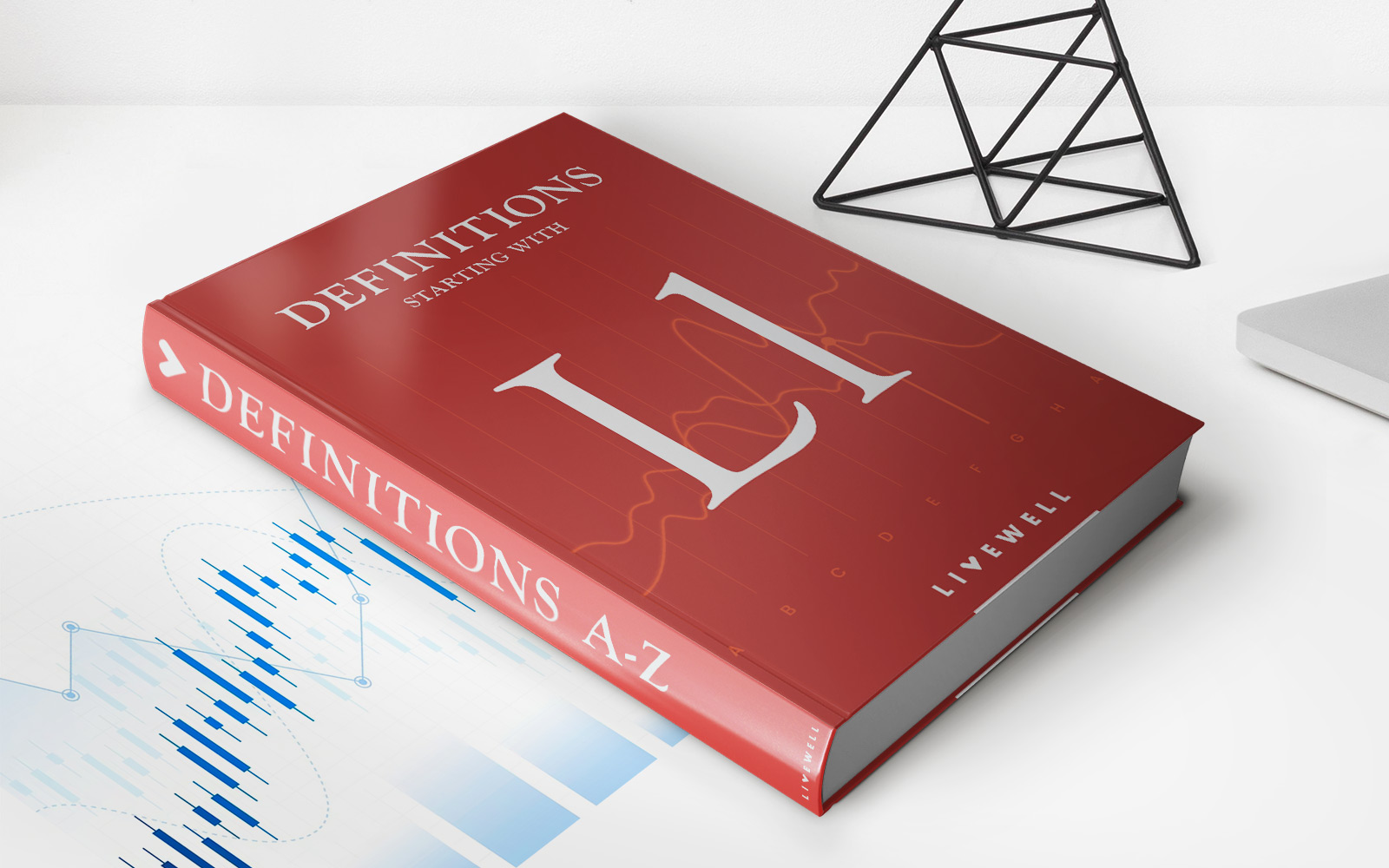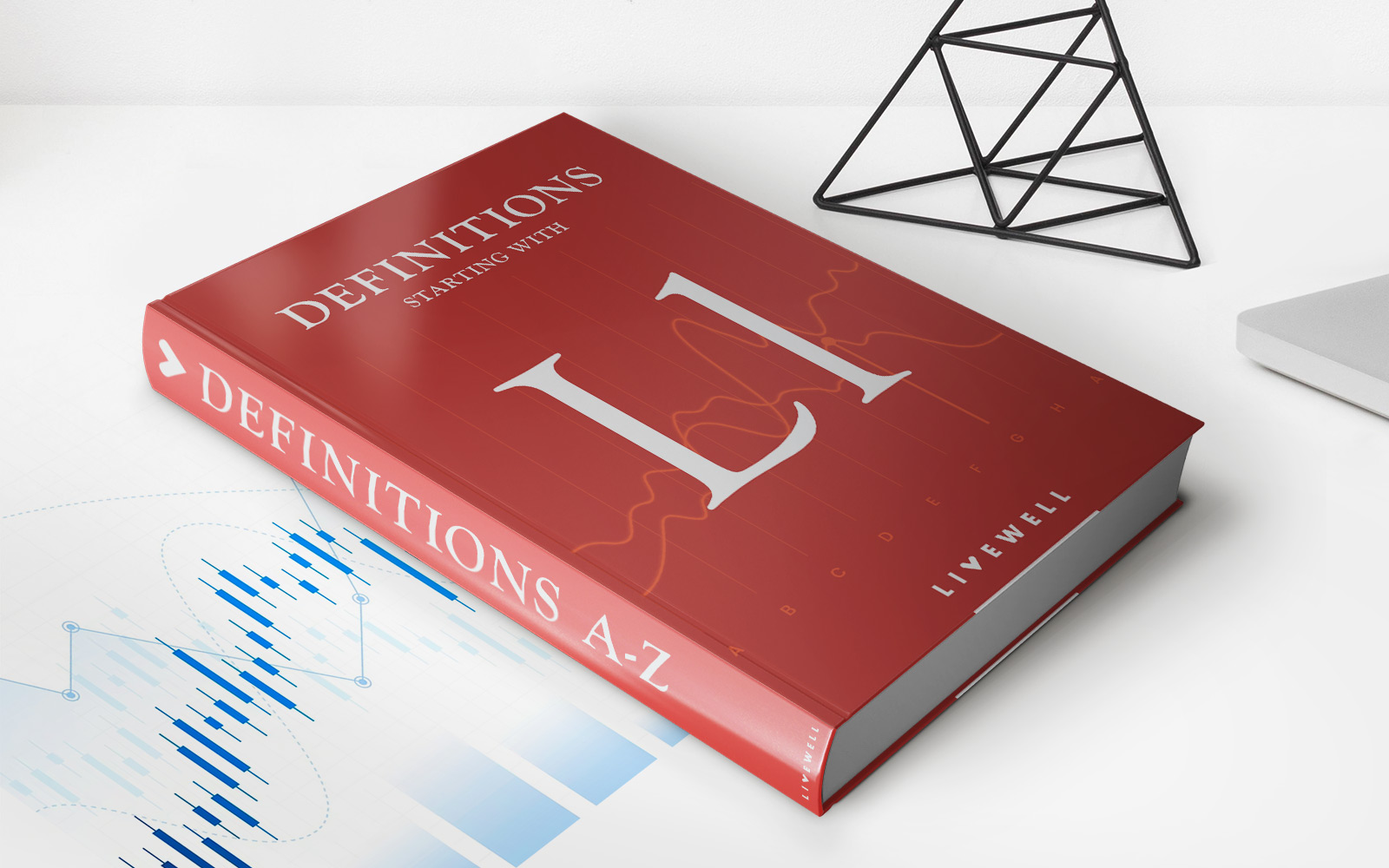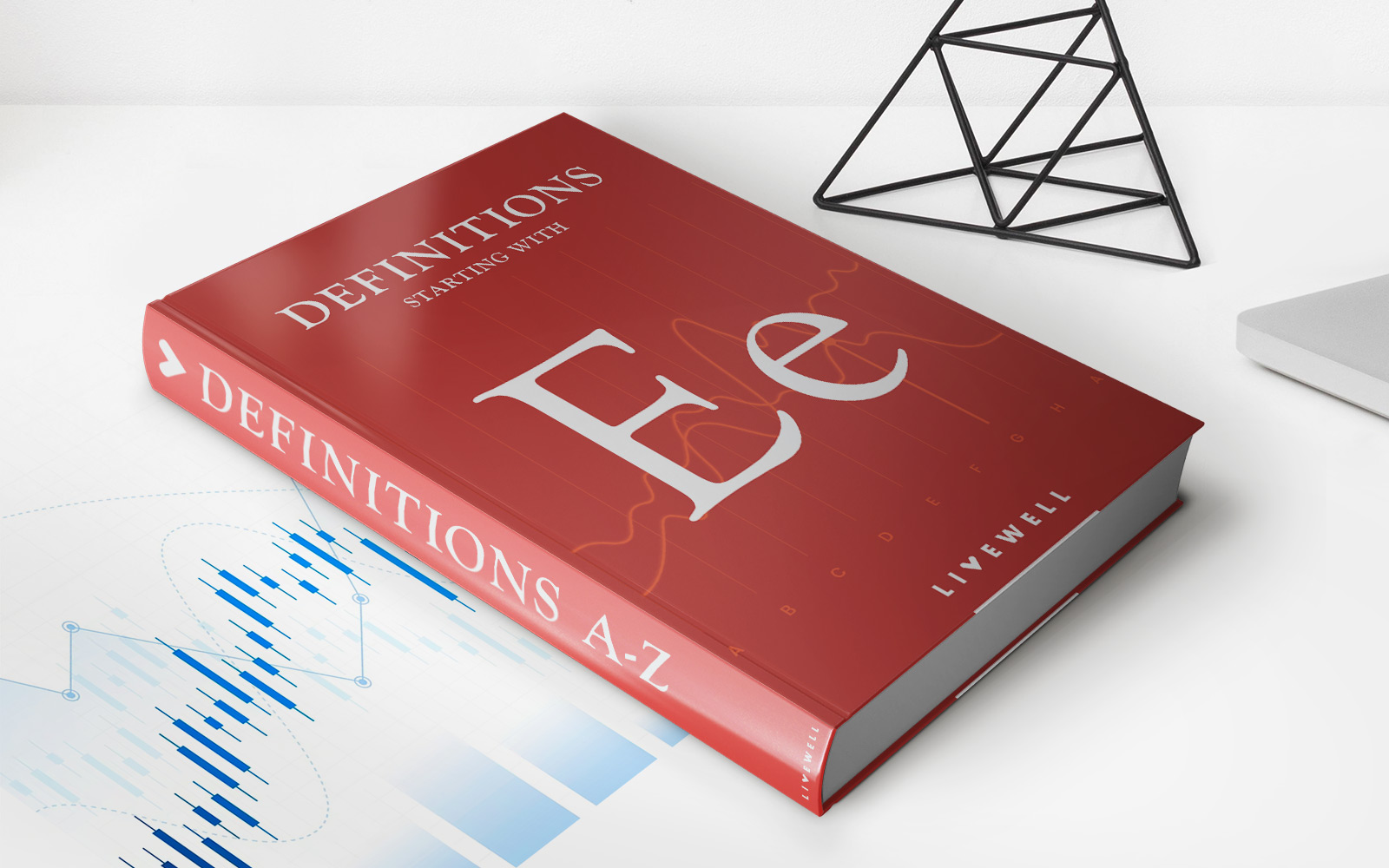Home>Finance>What Is A Good Long-Term Debt To Capital Structure


Finance
What Is A Good Long-Term Debt To Capital Structure
Modified: February 21, 2024
Learn about the ideal long-term debt to capital structure in finance. Optimize your financial health with a balanced ratio of debt and capital for sustainable growth.
(Many of the links in this article redirect to a specific reviewed product. Your purchase of these products through affiliate links helps to generate commission for LiveWell, at no extra cost. Learn more)
Table of Contents
- Introduction
- Understanding Long-Term Debt
- Importance of Capital Structure
- What is Debt to Capital Ratio?
- Determining a Good Long-Term Debt to Capital Structure
- Factors to Consider in Evaluating Debt to Capital Structure
- Potential Risks and Benefits of Different Debt to Capital Structures
- Strategies for Maintaining a Healthy Debt to Capital Ratio
- Case Studies: Examining Companies with Successful Debt to Capital Structures
- Conclusion
Introduction
When it comes to assessing a company’s financial health, one crucial aspect to consider is its long-term debt to capital structure. This metric provides valuable insights into how a company finances its operations and the level of financial risk it carries. Understanding a good long-term debt to capital structure is essential for investors, lenders, and even managers as they evaluate a company’s ability to meet its financial obligations and sustain its operations in the long run.
Long-term debt refers to any financial obligations a company has that are due in more than one year. This includes loans, bonds, and other forms of borrowing. On the other hand, capital structure refers to the way a company funds its operations, combining debt and equity. It represents the mix of long-term debt and shareholders’ equity used to finance a company’s assets and operations.
The ratio between long-term debt and capital structure provides a measure of the company’s financial leverage and its ability to repay its debt. A lower ratio indicates a lower level of debt relative to the overall capital structure, which reduces the financial risk for the company. A higher ratio, on the other hand, suggests a higher level of debt and a potentially higher level of risk.
Understanding what constitutes a good long-term debt to capital structure is crucial for stakeholders in making informed decisions. A well-balanced capital structure can provide stability, financial flexibility, and minimize potential risks. On the other hand, a poor debt to capital structure can lead to financial instability, higher interest payments, and constraints on future growth prospects.
In this article, we will delve into the concept of long-term debt to capital structure, its importance, how to determine a good ratio, and the potential risks and benefits of different debt to capital structure scenarios. We will also explore strategies that companies can employ to maintain a healthy and sustainable debt to capital ratio. Through case studies, we will further analyze companies that have achieved successful debt to capital structures, providing practical insights for investors and managers alike.
By gaining a deeper understanding of the importance of a good long-term debt to capital structure, stakeholders can make better-informed decisions and navigate the financial landscape with confidence.
Understanding Long-Term Debt
Long-term debt is a fundamental component of a company’s capital structure. It represents the financial obligations that extend beyond one year and are used to finance a company’s operations, expansion, or acquisition of assets. Understanding the nature and characteristics of long-term debt is crucial in evaluating a company’s financial health and its ability to meet its payment obligations.
Long-term debt can take various forms, including bank loans, bonds, mortgages, and convertible securities. These obligations are typically secured by the company’s assets, providing lenders with a level of protection in case of default. Moreover, long-term debt carries an interest rate, which serves as compensation to the lender for providing the funds.
Unlike short-term debt, which needs to be repaid within a year, long-term debt provides companies with a more extended time horizon to meet their obligations. This allows companies to utilize these funds for longer-term investments and operational needs.
One important characteristic of long-term debt is that it is typically a fixed obligation. Lenders and bondholders expect regular interest payments and principal repayments according to the agreed upon terms. This can be a significant burden for a company, especially during periods of financial distress or economic downturns when cash flow may be constrained.
It is important to note that taking on long-term debt can be both advantageous and risky for a company. On one hand, it provides the necessary funding to finance growth opportunities, such as expanding production capacity or entering new markets. It can also offer tax advantages since interest payments on debt can be tax-deductible expenses.
On the other hand, excessive long-term debt can become a financial burden, leading to increased interest expenses and reducing the company’s financial flexibility. If a company is unable to meet its debt obligations, it may face serious consequences, including bankruptcy or forced asset sales.
Thus, understanding the nature of long-term debt and its implications is vital in assessing a company’s financial stability and evaluating its ability to manage and repay its debts. The long-term debt to capital structure ratio provides a quantitative measure that helps stakeholders better understand the company’s leverage and financial risk.
Importance of Capital Structure
The capital structure of a company is a crucial aspect of its overall financial management. It represents the way a company funds its operations, combining debt and equity to finance its assets and investments. The capital structure plays a significant role in determining a company’s financial stability, risk profile, and ability to generate returns for its shareholders.
One primary importance of capital structure lies in its impact on a company’s cost of capital. The cost of capital refers to the rate of return required by investors to invest in a company. A well-structured capital mix can help optimize the cost of capital by finding the right balance between debt and equity. Debt generally carries a lower cost than equity since interest payments are tax-deductible and debt holders have a priority claim on assets in case of bankruptcy. By utilizing a combination of debt and equity, companies can lower their overall cost of capital and maximize their profitability.
Another key consideration of capital structure is its effect on financial risk. A company that relies heavily on debt financing may face increased financial risk due to the obligations and interest payments associated with debt. This risk can be further exacerbated if the company’s cash flows are unable to cover its debt repayment obligations. On the other hand, a company with a conservative capital structure that relies more on equity financing may have a lower financial risk as it is not burdened by significant debt obligations.
Capital structure also impacts a company’s financial flexibility. Companies with a well-diversified capital structure have greater flexibility in managing their financial obligations and pursuing growth opportunities. By having a mix of debt and equity, companies can access different sources of capital to fund their operations and investments. This flexibility can be especially important during periods of economic uncertainty or when companies need to invest in research and development, acquisitions, or other strategic initiatives.
Furthermore, the capital structure can be influenced by a company’s industry, growth stage, and desired financial goals. For example, high-growth companies in technology or biotechnology industries may opt for a higher proportion of equity financing to fund their research and development efforts. On the other hand, more established companies in stable industries may lean towards debt financing to take advantage of the tax benefits and lower borrowing costs.
Achieving an optimal capital structure requires careful planning and analysis. Companies need to consider their cash flow generation, profitability, market conditions, and risk tolerance when determining the appropriate mix of debt and equity. By maintaining a well-structured capital mix, companies can enhance their financial stability, improve their cost of capital, and create value for their shareholders.
What is Debt to Capital Ratio?
The debt to capital ratio is a financial metric that measures the proportion of a company’s long-term debt relative to its total capital structure. It provides valuable insights into the financial leverage and risk of a company by comparing the amount of debt used to finance the company’s operations to the total capital employed.
The formula to calculate the debt to capital ratio is as follows:
Debt to Capital Ratio = Long-Term Debt / (Long-Term Debt + Shareholders’ Equity)
The ratio is expressed as a percentage, representing the proportion of debt in the company’s capital structure. A higher debt to capital ratio indicates a higher level of debt relative to the total capital structure, suggesting a higher level of financial risk. Conversely, a lower debt to capital ratio indicates a lower level of debt and potentially lower financial risk.
The debt to capital ratio provides valuable insights into a company’s ability to meet its long-term debt obligations and the level of financial risk it carries. Investors and lenders use this ratio to assess a company’s creditworthiness and financial stability. A higher debt to capital ratio may indicate that a company has a higher level of financial risk and may face challenges in meeting its debt repayments. Conversely, a lower debt to capital ratio suggests a more conservative financial structure and a lower level of risk.
It is important to note that the optimal debt to capital ratio varies across industries and companies, and there is no universally applicable benchmark. Different industries and companies have different risk profiles and capital requirements, which influence their ideal debt to capital ratio.
For example, capital-intensive industries such as manufacturing or transportation may require higher levels of debt financing to fund their operations and investments in assets. On the other hand, service-based industries or technology startups may have lower capital requirements and may prefer to rely more on equity financing.
When evaluating a company’s debt to capital ratio, it is essential to consider the context of the industry, the company’s growth stage, and its specific financial goals. Comparing the ratio with industry peers or historical trends can provide further insights into the company’s financial position and its ability to manage its debt.
The debt to capital ratio is a useful tool for investors, lenders, and managers to assess a company’s financial stability and risk profile. By monitoring and analyzing this ratio, stakeholders can make informed decisions, mitigate financial risks, and contribute to the long-term success and sustainability of a company.
Determining a Good Long-Term Debt to Capital Structure
Determining what constitutes a good long-term debt to capital structure involves assessing various factors, including industry norms, company financial goals, and risk tolerance. While there is no universally applicable benchmark, there are several considerations that can help guide the evaluation process.
1. Industry Standards: Comparing a company’s long-term debt to capital ratio with industry peers can provide valuable insights. Different industries have different capital requirements and risk profiles. Analyzing industry norms can help determine whether a company’s debt to capital structure is within an acceptable range and aligns with industry practices.
2. Financial Goals: Each company may have specific financial goals that influence its desired debt to capital structure. For example, a company aiming for rapid growth and expansion may be willing to assume higher debt levels to fund its investments. Alternatively, a company prioritizing financial stability and lower risk may favor a conservative debt to capital structure.
3. Risk Tolerance: Assessing the company’s risk tolerance is essential in determining its optimal debt to capital structure. Companies with a higher tolerance for financial risk may be comfortable with a higher debt to capital ratio. Conversely, risk-averse companies may prefer a more conservative approach with lower debt levels.
4. Cash Flow and Revenue Stability: Evaluating a company’s cash flow and revenue stability is crucial in determining its ability to service its debt obligations. A company with stable and predictable cash flows may have a higher capacity to handle debt payments, warranting a slightly higher debt to capital ratio. However, a company with volatile or uncertain cash flows may need to maintain a lower ratio to mitigate the risk of default.
5. Maintain Financial Flexibility: A good long-term debt to capital structure should also consider the company’s need for financial flexibility. Companies often encounter unforeseen circumstances or opportunities that require access to capital. By balancing debt and equity, companies can maintain the flexibility to raise capital, pursue strategic initiatives, or weather economic downturns.
It is important to note that determining a good long-term debt to capital structure is not solely about achieving a specific ratio. It is a dynamic process that requires continuous monitoring and adjustment based on changing market conditions, business performance, and financial goals.
Ultimately, the ideal long-term debt to capital structure will vary depending on the unique characteristics of the company, its industry, and its goals. Striking the right balance between debt and equity is crucial to ensure financial stability, minimize risk, and position the company for long-term success.
Factors to Consider in Evaluating Debt to Capital Structure
Evaluating the debt to capital structure of a company requires a thorough analysis of various factors that can significantly impact its financial health and risk profile. Understanding these factors is essential for stakeholders to make informed decisions and assess the company’s ability to meet its long-term obligations. Here are some key factors to consider:
1. Industry and Business Model: Different industries have varying capital requirements and risk profiles. Capital-intensive industries, such as manufacturing or infrastructure, may require higher levels of debt to finance their operations and investments. Service-based industries or technology startups may have lower capital needs and may rely more on equity financing. Evaluating the debt to capital structure within the context of the industry and the company’s business model is crucial.
2. Revenue Stability and Cash Flow: Assessing the stability and predictability of a company’s revenue and cash flow is crucial in evaluating its debt to capital structure. Companies with stable and consistent cash flows may have a higher capacity to service their debt obligations. Conversely, companies with volatile or cyclical revenue streams may need to maintain a lower debt to capital ratio to mitigate the risk of financial distress during economic downturns.
3. Growth Stage and Expansion Plans: The growth stage of a company also influences its optimal debt to capital structure. Early-stage or high-growth companies may be more inclined to assume higher debt levels to fund their expansion plans or research and development activities. Established companies in mature industries may prioritize financial stability and prefer lower debt levels.
4. Risk Tolerance and Financial Objectives: Evaluating the company’s risk tolerance and financial objectives is crucial in determining its ideal debt to capital structure. Companies with a higher tolerance for financial risk may be comfortable with a higher debt burden, aiming for higher returns on equity. Conversely, risk-averse companies or those focused on financial stability may prioritize a more conservative debt to capital structure.
5. Interest Rates and Financing Costs: Analyzing prevailing interest rates and financing costs is essential. The cost of debt impacts a company’s profitability and ability to service its loan obligations. A company with access to lower-cost debt or favorable interest rates may have more flexibility in managing its debt to capital structure.
6. Debt Maturity Profiles: Examining the maturity profiles of a company’s debt can provide insights into its ability to manage its payment obligations. Companies with a balanced debt maturity profile, spread out over different time horizons, may have a better ability to handle debt repayments. A concentrated debt maturity profile with a high proportion of debt coming due in a short period may create liquidity risks.
7. Credit Rating and Access to Capital: The company’s credit rating and access to capital markets can influence its debt to capital structure. A higher credit rating may allow a company to secure debt at more favorable terms and lower interest rates. Conversely, companies with lower credit ratings may face challenges in accessing debt financing or may need to accept higher interest rates.
In evaluating a company’s debt to capital structure, it is crucial to consider these factors holistically. Striking a balance between debt and equity that aligns with the company’s industry, business model, and risk appetite is essential to maintain financial stability, optimize the cost of capital, and achieve long-term success.
Potential Risks and Benefits of Different Debt to Capital Structures
The debt to capital structure of a company has both potential risks and benefits that can significantly impact its financial stability and overall performance. Understanding these risks and benefits is crucial for stakeholders to assess the implications of different debt to capital structures. Here are some key considerations:
Potential Risks:
- Financial Risk: A higher level of debt in the capital structure increases the company’s financial risk. It can lead to higher interest expenses and debt servicing obligations, potentially straining the company’s cash flow and profitability.
- Default Risk: In times of financial distress, companies burdened with excessive debt may struggle to meet their debt payment obligations, increasing the risk of default. This can negatively impact the company’s credit rating, access to financing, and overall reputation.
- Reduced Financial Flexibility: Companies with high debt levels may face limited financial flexibility. They can have less capacity to invest in growth opportunities, pursue strategic initiatives, or navigate challenging economic conditions. This lack of flexibility can hinder the company’s ability to adapt to changing market conditions.
- Higher Interest Expenses: A higher debt to capital structure means a greater interest expense for the company. This can put pressure on the company’s profitability, especially if interest rates or borrowing costs increase.
Potential Benefits:
- Efficient Use of Capital: Debt financing can enable companies to leverage their equity and use borrowed funds to support business growth and expansion. It allows companies to access capital without diluting ownership stakes, potentially resulting in better returns on equity for shareholders.
- Tax Advantage: Interest payments on debt are often tax-deductible, providing companies with a tax advantage. Companies can reduce their taxable income, lowering their overall tax liability and increasing their after-tax cash flow.
- Enhanced Return on Investment: In industries with higher growth rates and lucrative investment opportunities, financing projects with debt can generate higher returns on investment. By using debt to finance capital expenditures or acquisitions, companies can capitalize on growth opportunities and potentially achieve greater profitability.
- Capital Structure Flexibility: Having a mix of debt and equity in the capital structure provides companies with flexibility. It allows them to access different sources of capital based on their specific needs, risk tolerance, and market conditions.
It is important to note that the risks and benefits associated with different debt to capital structures vary depending on the company’s circumstances, industry dynamics, and market conditions. What may be advantageous for one company or industry may not be suitable for another. Striking the right balance between debt and equity requires careful consideration of the company’s risk appetite, profitability, growth objectives, and the prevailing economic landscape.
By carefully analyzing the potential risks and benefits, stakeholders can make more informed decisions regarding a company’s debt to capital structure and align it with the company’s overall financial goals and risk tolerance.
Strategies for Maintaining a Healthy Debt to Capital Ratio
Maintaining a healthy debt to capital ratio is essential for companies to ensure financial stability, manage risk, and optimize their overall capital structure. Here are some strategies that companies can employ to maintain a healthy debt to capital ratio:
- Regular Monitoring and Analysis: Companies should regularly monitor and analyze their debt to capital ratio to ensure it remains within a healthy range. This allows companies to identify early warning signs of potential issues and take corrective measures in a timely manner.
- Optimize Cash Flow Management: Improving cash flow management is crucial in maintaining a healthy debt to capital ratio. Companies should focus on maximizing cash flow generation through efficient working capital management, inventory control, and timely collection of receivables. This will provide companies with the necessary liquidity to service their debt obligations.
- Prudent Debt Management: Companies should adopt a prudent approach to debt management. This includes conducting thorough due diligence before taking on debt, negotiating favorable interest rates and terms, and carefully assessing the company’s ability to service the debt. It is essential to avoid excessive borrowing that may strain the company’s financial resources.
- Strategic Use of Equity Financing: Companies can consider utilizing equity financing as an alternative to debt. By issuing additional shares or seeking equity investments, companies can strengthen their equity base and reduce their dependence on debt. This can help maintain a healthier debt to capital ratio and reduce financial risk.
- Debt Restructuring: In certain situations, companies may need to consider debt restructuring to improve their debt to capital ratio. This can involve negotiating with lenders to modify repayment terms, extend debt maturity, or reduce interest rates. Debt restructuring can help alleviate short-term financial pressures and create a more sustainable capital structure.
- Focus on Profitability and Efficiency: Companies should strive to enhance profitability and operational efficiency to generate higher cash flows. By improving profitability, companies can reduce their reliance on debt financing and increase their capacity to service existing debt obligations while maintaining a healthy debt to capital ratio.
- Continuous Financial Planning: Companies should engage in comprehensive financial planning to assess their capital needs and potential funding sources. By aligning their financial plans with their long-term goals, companies can determine the optimal mix of debt and equity financing, ensuring a healthy debt to capital ratio.
- Conservative Risk Management: Prudent risk management practices are essential in maintaining a healthy debt to capital ratio. This includes diversifying debt sources, avoiding reliance on a single lender, and implementing risk mitigation strategies such as hedging against interest rate fluctuations.
Implementing these strategies requires careful analysis, effective financial management, and a long-term perspective. Companies should tailor their approaches based on their industry, risk appetite, growth objectives, and the prevailing market conditions. By maintaining a healthy debt to capital ratio, companies can enhance their financial stability, unlock growth opportunities, and position themselves for long-term success.
Case Studies: Examining Companies with Successful Debt to Capital Structures
Examining companies with successful debt to capital structures can provide valuable insights and practical examples of how businesses have effectively managed their financial leverage. Here are two case studies that highlight companies known for maintaining healthy debt to capital ratios and achieving long-term success:
- Company A – Consumer Goods Manufacturer: Company A is a well-established consumer goods manufacturer with a strong brand presence. They have achieved a healthy debt to capital structure by employing a balanced approach to debt management and equity financing. The company carefully assesses its capital needs and utilizes debt to fund strategic acquisitions and capital expenditures. They maintain a conservative debt to capital ratio to ensure financial stability and flexibility. Additionally, Company A focuses on generating consistent cash flows by efficiently managing its working capital and product portfolio. This allows them to meet debt repayment obligations without straining their resources. By maintaining a healthy debt to capital ratio, the company has not only mitigated financial risk but also positioned itself for sustainable growth and profitability.
- Company B – Technology Startup: Company B is a technology startup operating in a highly innovative and competitive industry. Despite being in the early stages of growth, the company has successfully managed its debt to capital structure. Aware of the risks associated with excessive debt, Company B has primarily relied on equity financing to fund its operations. By attracting venture capital investments and strategic partners, they have been able to raise sufficient capital without accumulating significant debt. This approach has provided the company with the financial flexibility to invest in research and development, expand its market presence, and attract top talent within the industry. Consequently, Company B has achieved sustained growth and positioned itself as a leader in its niche market. By carefully managing their debt to capital structure, the company has maintained a strong financial position and minimized risks associated with debt obligations.
These case studies demonstrate that successful management of debt to capital ratios requires careful consideration of industry dynamics, risk tolerance, and financial objectives. Companies must evaluate their capital needs, cash flow capabilities, and growth strategies to determine an optimal mix of debt and equity financing that aligns with their specific circumstances. It is important to note that these case studies provide examples of successful approaches, and each company’s debt to capital structure should be evaluated within the context of its unique attributes and goals.
By studying companies like Company A and Company B, stakeholders can gain valuable insights and potential strategies for maintaining a healthy debt to capital ratio, identifying the best practices that are relevant to their own organizations. Ultimately, companies that effectively manage their debt to capital structures are better positioned to navigate financial challenges and capitalize on growth opportunities in the long term.
Conclusion
Understanding and maintaining a healthy long-term debt to capital structure is crucial for companies to achieve financial stability, manage risk, and optimize their overall financial position. By carefully evaluating their debt to capital ratio and implementing appropriate strategies, companies can mitigate financial risks, enhance profitability, and position themselves for long-term success.
In this article, we explored the concept of long-term debt to capital structure and its significance for stakeholders such as investors, lenders, and managers. We discussed the factors to consider in evaluating debt to capital structure, including industry norms, financial goals, and risk tolerance. Furthermore, we examined the potential risks and benefits associated with different debt to capital structures, highlighting the importance of finding the right balance between debt and equity financing.
We also discussed strategies for maintaining a healthy debt to capital ratio, emphasizing the importance of regular monitoring, optimizing cash flow management, and prudent debt management. Additionally, we explored the value of focusing on profitability, utilizing equity financing strategically, and continuous financial planning. These strategies, when implemented effectively, can help companies maintain financial stability, maximize returns on investment, and navigate economic challenges.
Furthermore, we provided case studies showcasing companies that have successfully managed their debt to capital structures. The examples of Company A, a consumer goods manufacturer, and Company B, a technology startup, demonstrated the importance of industry-specific approaches, assessing risk tolerance, and adopting suitable financing methods to achieve sustainable growth and financial strength.
In conclusion, maintaining a healthy long-term debt to capital structure requires a comprehensive understanding of a company’s industry, financial goals, and risk appetite. By considering these factors, implementing sound strategies, and continuously assessing and adjusting the debt to capital ratio, companies can improve their financial position, enhance their creditworthiness, and position themselves for long-term success.














